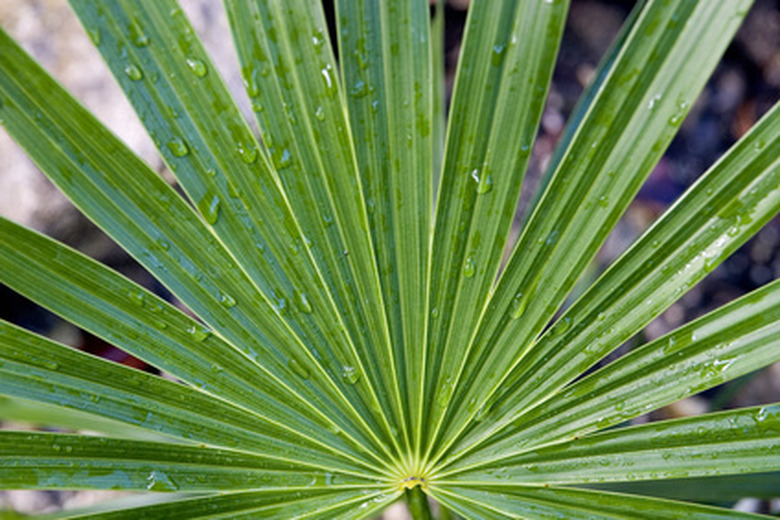How Much Do You Water The Indoor Palm Plant?
How much do you water an indoor palm plant? Most indoor palms have similar water requirements regardless of the plant variety. Palm plants naturally grow in humid tropical and subtropical areas where plenty of moisture is readily available. The drier indoor plant conditions inside most homes make palms require a higher amount of watering than they do in their natural environs.
Tip
You should water most indoor palms when the top inch of their potting soil is dry.
Soil Quality and Moisture
While palm plants grow best in moist soils, too much moisture can cause plant health to decline. Root rot is a concern if the soil holds too much water or if you overwater your palm. A well-drained potting soil that contains organic matter ensures the soil holds on to enough moisture to feed the palm without becoming soggy.
A quality potting soil that has perlite or vermiculite in it is effective for an indoor palm plant. The perlite or vermiculite provides porosity to the soil for drainage, while the organic matter retains the necessary moisture for healthy growth. These soils are also less prone to compaction, which allows them to both absorb and drain water properly.
Indoor Palm Plant Watering Methods
Always feel the soil for your indoor palm plant before watering. Soil that looks dry on top may still be wet just beneath the surface. Stick your finger 2 inches into the soil. If the soil feels dry at a 1-inch depth the palm needs watering.
Water at the base of the trunk until the excess water drips from the bottom of the pot. Empty any water collected in the drip tray after you're done watering so the palm isn't left in standing water. Indoor palms may need watering up to twice a week depending on how dry your home is. In humid areas, the palms may need less frequent watering. Feel the soil every three to five days to determine the watering frequency for your plant.
Water Stress Symptoms
Be aware of the signs of water stress so you can remedy any problems before they permanently damage the indoor palm plant. The tips and margins of the leaves begin to brown when the palm isn't receiving enough water. Too much water is just as harmful. Even when the plant is provided with the right amount of moisture, the leaves will still naturally die and fall off the palm. Overwatered plants, however, may begin dropping otherwise healthy fronds. A foul odor may also emanate from the soil as the roots begin to rot and turn mushy.
Indoor Humidity Needs
Palm plants thrive in humid environments. If the leaves look brown but the soil still feels moist, add humidity to the air. Putting gravel and a little water in the pot saucer adds moisture without causing a root rot issue for the plant, as long as you keep the water level below the bottom of the pot. Misting the plant with water in a spray bottle each day can help. You can also place a humidifier in the room to add moisture to the air.
Summer Watering Considerations
Even indoor plants dry out more quickly during summer, especially if the palms are receiving more light and heat through the windows. Water more frequently to prevent rapid soil drying. Check the soil every other day and water when the top half-inch feels dry. If you move your indoor palms outside during the summer, check the soil daily. The hot outdoor temperatures and drying summer breezes may necessitate daily watering.
